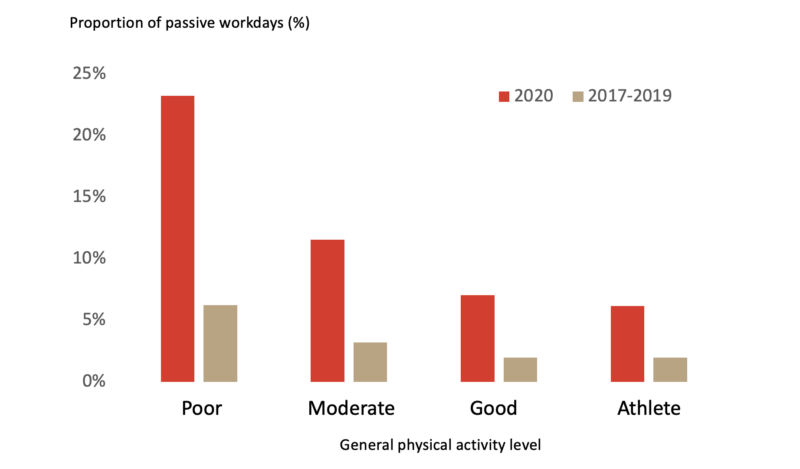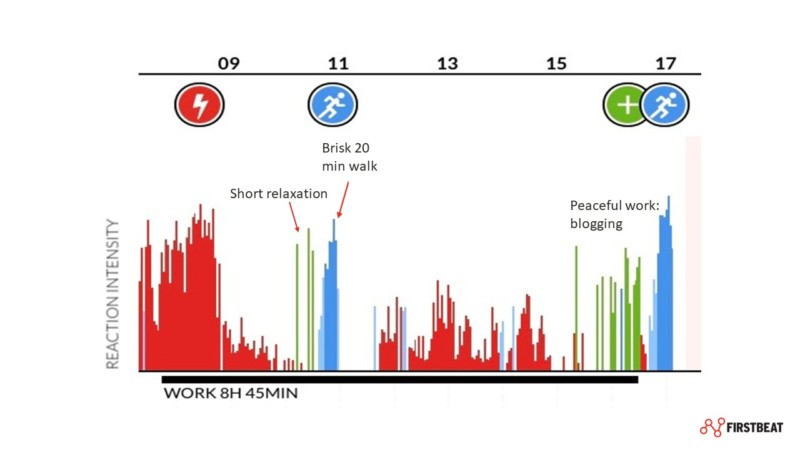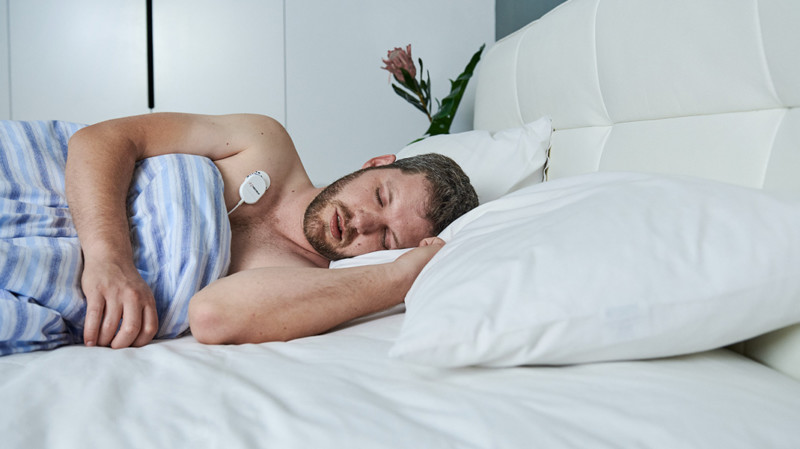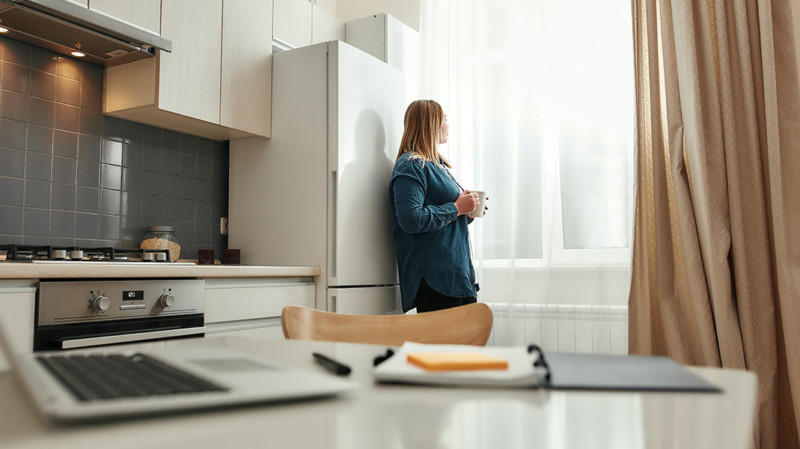
The health benefits of exercise are powerful, and yet, too many do not make a habit of it. 2020 moved people into lockdown and remote work, and the problem of being sedentary became even more acute. We need to do all we can to build physical activity into our daily routines.
All reasons that keep us from exercising are fake reasons (excuses).
This quote was made famous by Finland’s long-time president Urho Kekkonen, and it’s still often quoted when discussing the importance of physical activity. Personally, I take a slightly gentler approach, emphasizing the value of recognizing when you need a rest because overdoing is also a common problem these days.
But the basic message is very true! According to a study conducted by the Finnish government and UKK Institute, the total annual cost caused by passive lifestyle and poor fitness is in the range of 3,2–7,5 billion euros only in Finland. The WHO ranks sedentary lifestyle as one of the leading independent risk factors of death and disability.
During the Covid-19 pandemic, with people in lockdown and working remotely, the challenge of sedentary lifestyles became an even more pressing issue. We need to do all we can to keep up our own exercise habits and motivate the least active to build physical activity into their daily routines.
One of our corporate lectures (Fit for Life: Exercise Benefits for Health and Fitness) starts with a list of science-based physical and mental health benefits of exercise, such as improved cardiovascular, lung and musculoskeletal health, a healthier blood sugar level, reduced stress and anxiety, as well as positive effects on weight management, mood, energy and depressive symptoms. The Firstbeat database also shows a strong link between fitness and recovery: people in better fitness have a better capacity to recover. The health benefits of exercise are powerful, and yet, too many do not make a habit of it.
Exercise Recommendations and the Pandemic
Globally used physical activity guidelines for adults recommend 2 h 30 min of moderate or 1h 15 min of vigorous aerobic exercise per week: for example, 30 min of brisk walking on 5 days. The UKK Institute’s updated guideline in Finland highlights the importance of light physical activity as often as possible, in addition to the above-mentioned moderate or vigorous exercise.
Meeting the recommendations has become a pressing challenge during the pandemic: in April – October 2020, the number of very passive days (<1000 steps) increased dramatically in all fitness groups.
Passive workdays (under 1000 steps per day) in April-October 2020 compared to 2017–2019

Figure 1. The number of passive days increased dramatically in all fitness categories during 2020.
People discovered that unless they build physical activity into their remote workdays, it just does not happen, whereas a traditional workday commute can easily add several thousand steps, even without any actual “exercise”. To help manage daily stress levels, and stay healthy and fit in remote work, people need to find new ways to make up for this.
5 Tips on Building Activity Into Your Days
In our Firstbeat Life coaching discussions, based on measurements conducted in daily life, people are often surprised to discover that they can meet the physical activity recommendation by “just” biking to work or building walking into their routines. They might feel that they didn’t even exercise; yet the daily activity added up to a good result.
On the other hand, many people also discover (especially this year!) how passive their days are unless they pay attention to it. As coaches, we highlight the importance of engaging in light physical activity every day, in addition to moderate or vigorous exercise a few times per week.
The Firstbeat Life graph below shows an example of a remote workday that includes a 20-min walk at lunch and another 25-min walk after work. This added up to 7500 steps, a physical activity score of 75 / 100 and good health benefits. These types of activity breaks are possible for most of us, on most days, if we make the effort and find what works for us.

Figure 2. A remote workday with 2 walks produces good health benefits.
As we head into the summer months – when the Firstbeat database shows that on average, people’s activity level drops when compared to the 1st half of the year – here are my top tips for bucking the database trend and boosting your activity, whether working remotely or not.
1. Prioritize and Schedule Physical Activity Into Your Days!
Mark it in your calendar until it becomes a habit. Try different routines (before & after work / mid-work / walking meetings …) to find the ones that fit into your everyday life.
2. Find a Physical Activity That You Enjoy – Be Creative!
Try to add short and creative exercise routines into your day: walk with a friend, bike to the store, play ball games with your kids, do some garden work…
3. Accept That Any Exercise is Better Than No Exercise
If you cannot go to the gym or train as much as you would like right now, make sure you do something! Maintain a basic level of activity and be more ready when you have the resources, time, or opportunity to do more.
4. Mix It Up & Get Your Heart Rate Up Occasionally!
To build your fitness, try to do some vigorous exercise that gets your heart rate up. For example, if you normally walk (which is great!), try mixing 5 mins jogging and 5 mins walking for a total of 30 mins on 1-2 days per week. Or experiment with some short HIIT routines (e.g. on a stationary bike).
5. Know Yourself: Do You Need a Push Or a Rest?
If your tendency is to skip exercise whenever you feel tired or busy, give yourself a push. Go out for at least 10 mins, and if you feel bad, keep it short. Chances are, you will feel better when you get out the door! However, if you tend to overdo exercise, listen to your body, and learn to appreciate rest days, too.
Want to know how raising the amount of physical activity in daily basis will effect on your well-being?
Firstbeat Life is a corporate wellness solution that helps you understand the impact of your daily routine and learn how to make healthier, better choices.
You might also be interested in

How to Get Good Quality Sleep: Your Questions Answered
This blog focuses on some common topics and questions surrounding good quality sleep. The Q&A is based on questions received during our Sleep webinar with Sleep Expert and Author Dr….

Microbreak Recovery During the Workday – Manage Workload Remotely and in the Office
It is alarming that many employees do not recover during the work day at all. In continuous work, the body and mind are easily overloaded, which, in turn, increases load and fatigue. Therefore,…

Working from Home? 4 Top Tips for Creating a Productive and Healthy Workspace
Making sure you have a good home workspace is so valuable so set yourself up for success in your ‘home office’ by following these four tips.

